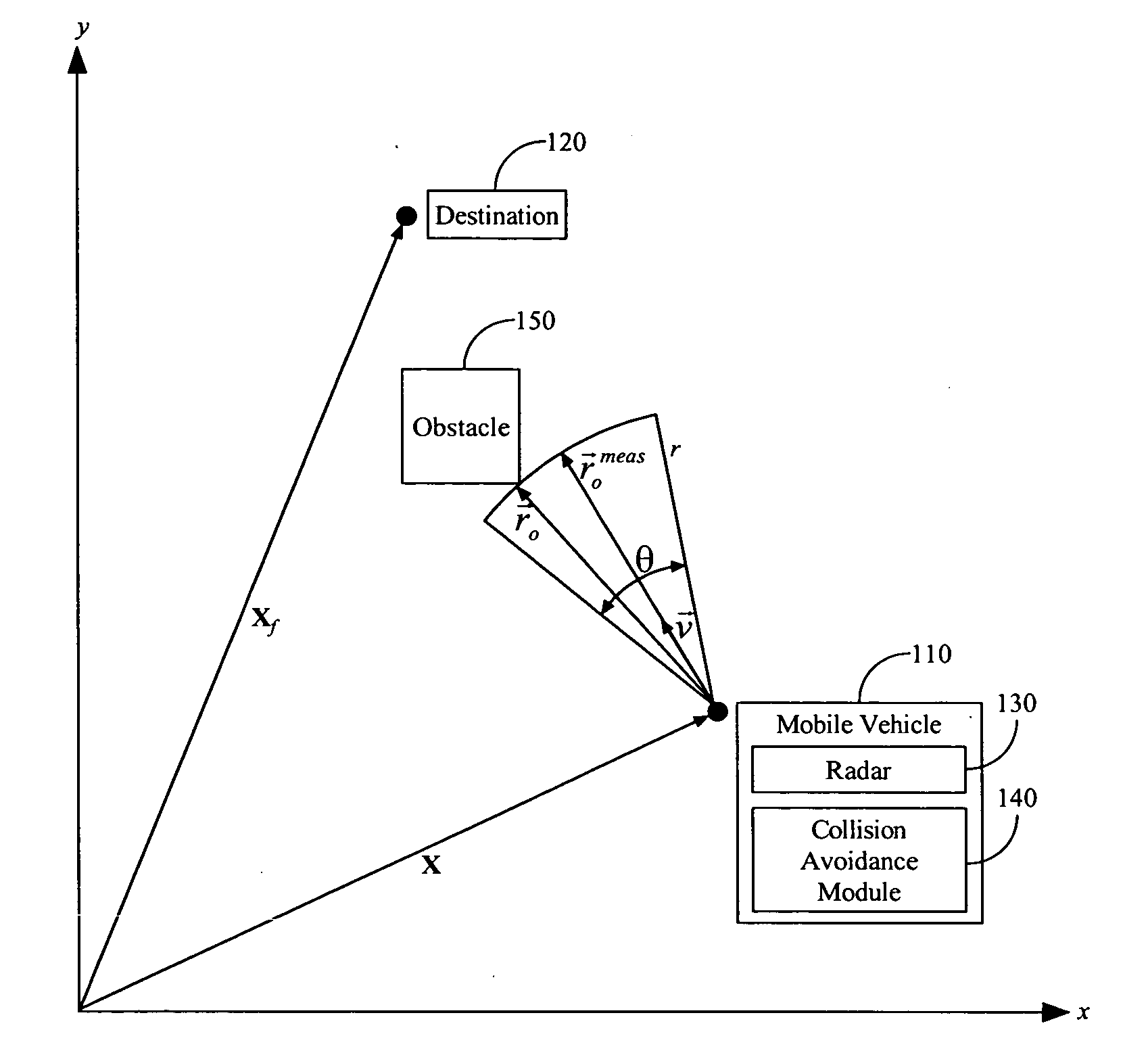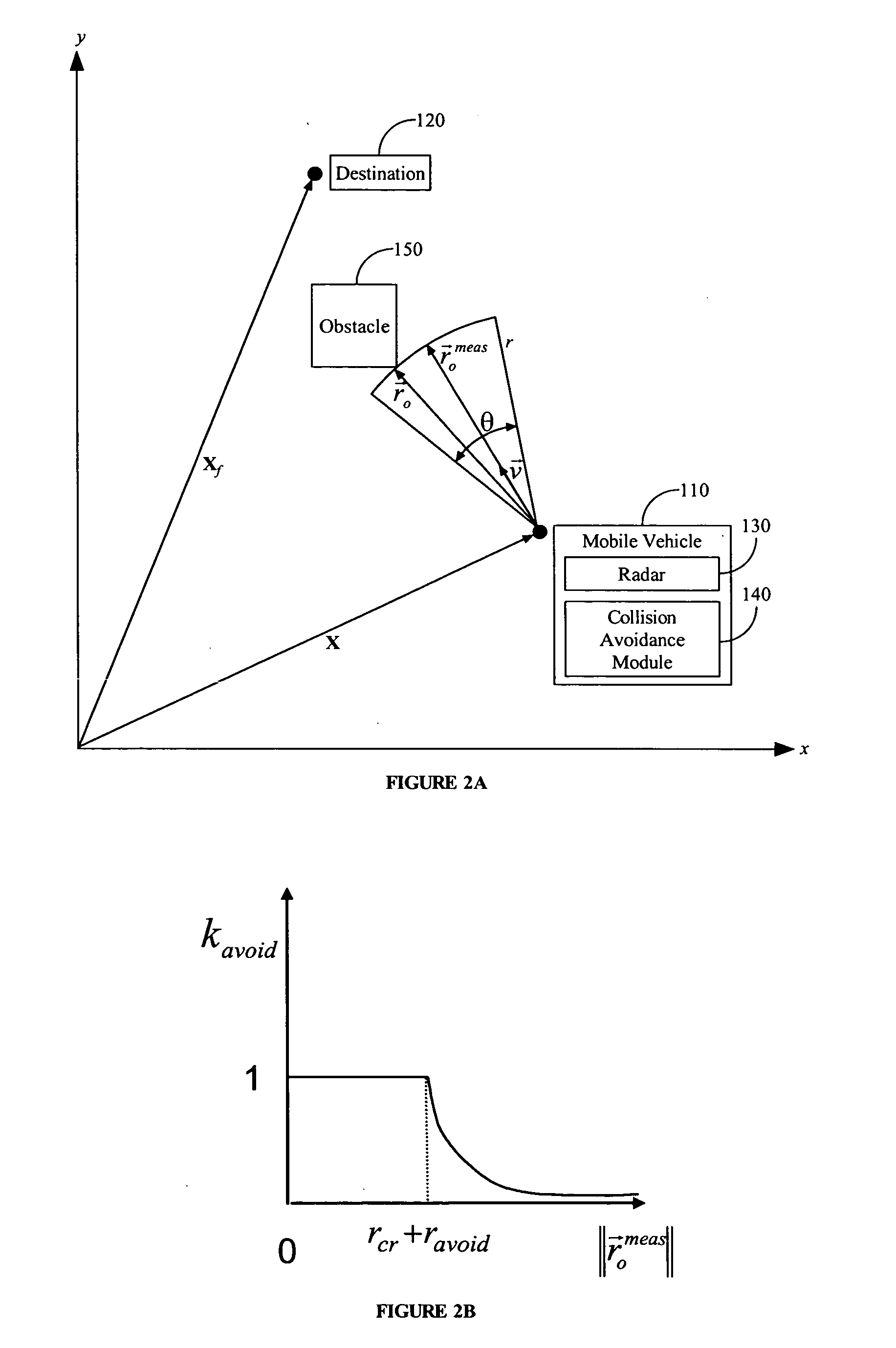Collision avoidance involving radar feedback
a radar feedback and collision avoidance technology, applied in the direction of process and machine control, distance measurement, instruments, etc., can solve the problems that unmanned mobile vehicles cannot rely solely on map-based trajectories, and unexpected obstacles may pop up
- Summary
- Abstract
- Description
- Claims
- Application Information
AI Technical Summary
Benefits of technology
Problems solved by technology
Method used
Image
Examples
Embodiment Construction
[0016] In the following detailed description, reference is made to the accompanying drawings that form a part hereof, and in which is shown by way of illustration specific illustrative embodiments in which the invention may be practiced. These embodiments are described in sufficient detail to enable those skilled in the art to practice the invention, and it is to be understood that other embodiments may be utilized and that logical, mechanical, and electrical changes may be made without departing from the spirit and scope of the present invention. The following detailed description is, therefore, not to be taken in a limiting sense.
[0017]FIG. 1 is a schematic of a mobile vehicle 110 traveling toward a destination 120. In a preferred embodiment, the mobile vehicle 110 comprises a hover-capable UAV, such as, for example, an organic air vehicle (OAV). In other embodiments, however, the mobile vehicle 110 may comprise any of a wide variety of other unmanned mobile vehicles, such as, fo...
PUM
 Login to View More
Login to View More Abstract
Description
Claims
Application Information
 Login to View More
Login to View More - R&D
- Intellectual Property
- Life Sciences
- Materials
- Tech Scout
- Unparalleled Data Quality
- Higher Quality Content
- 60% Fewer Hallucinations
Browse by: Latest US Patents, China's latest patents, Technical Efficacy Thesaurus, Application Domain, Technology Topic, Popular Technical Reports.
© 2025 PatSnap. All rights reserved.Legal|Privacy policy|Modern Slavery Act Transparency Statement|Sitemap|About US| Contact US: help@patsnap.com



